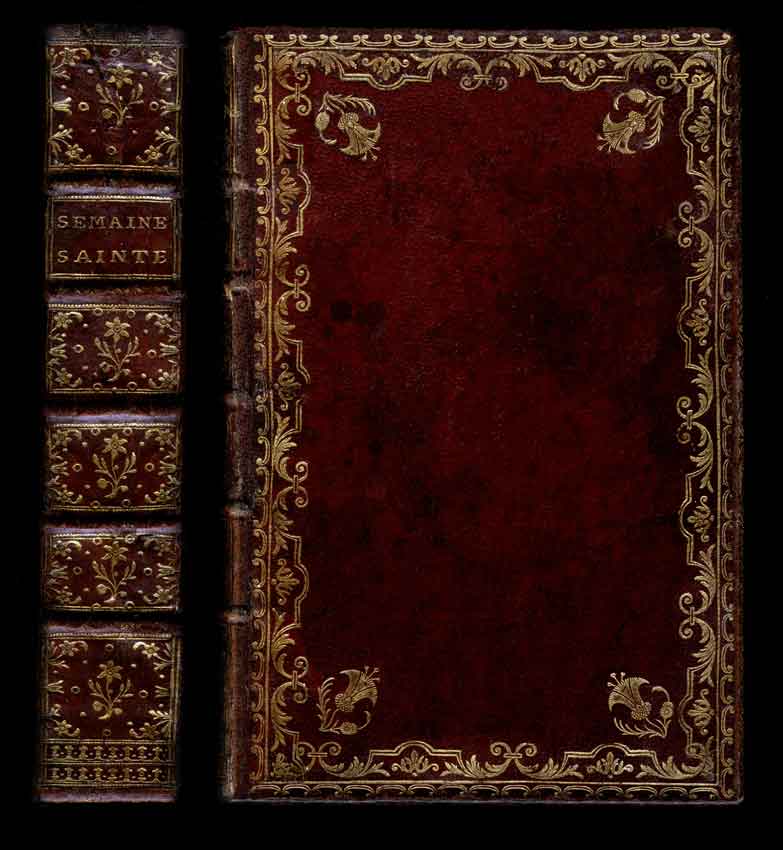

| I have renewed the image of this beautiful binding by Dubuisson which I discovered on eBay, last month. You can see copy the original listing with this link. As this binding was a bit damaged and the decoration quite plain, I suspect that no one recognized it as the work of Dubuisson. Or otherwise how can anyone imagine that this treasure sold for 15 euros! Fortunately I recently managed to aquire a Dubuisson plaque and we can now proceed to examine both bindings and extract the important tool imprints that will allow us to find even more Dubuisson bindings. We don't actually know if Dubuisson bound these books, but we can be reasonably sure that he was in charge of their decoration. |
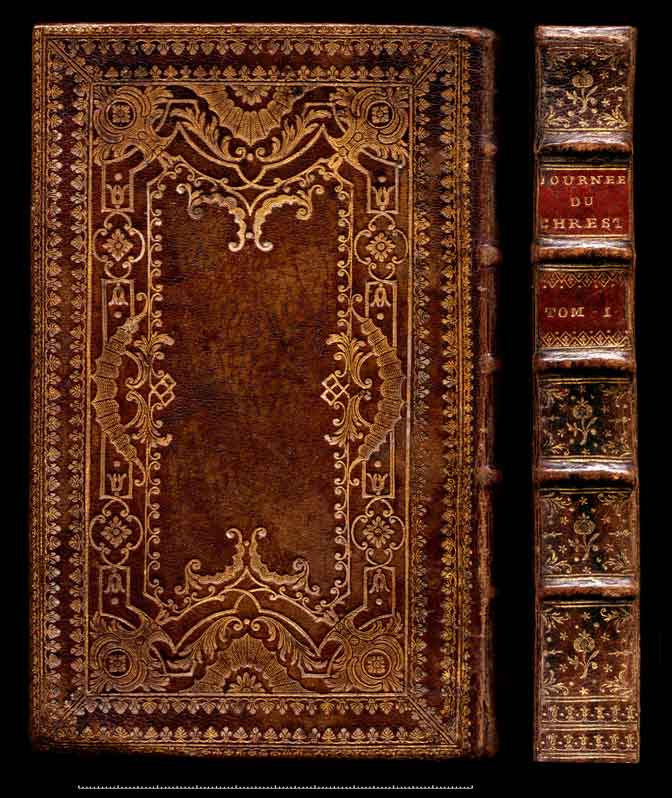
| This plaque is found on a copy of Journee du Chretien, that is missing the title page. I have not pinned down the date of publication, however I did come across this reference, Journée du chrétien, dédiée à Madame de France - livre également très répandu - Lyon, 1755, indicating then that this binding could be from that period. Note the use of the same palette on both bindings. |
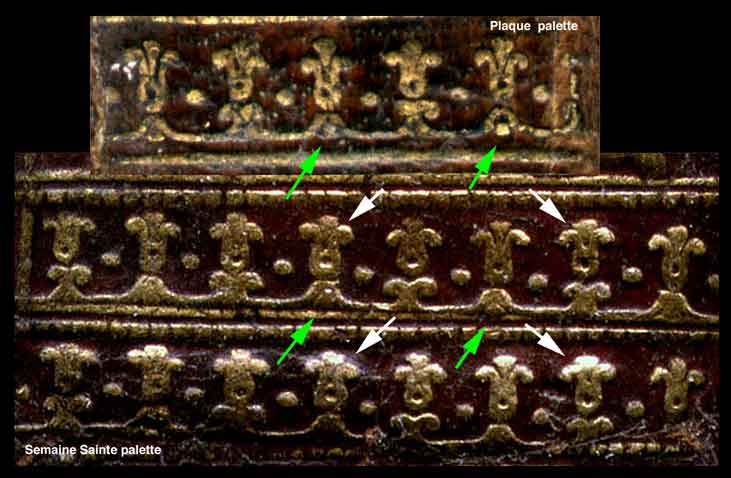
| Note carefully the details of this palette. It looks as though it has been constructed out of some old drawer handles with the lobes of one side filed off and a cowboy head glued on, the alternating effect makes this palette stand out from many others where we often find rows of identical heads. I say heads because I cannot find a better way to describe these strange little creatures, they remind me of heads with cowboy hats, and are probably tiny descendants of bud fleurons. I will just mention here something about bud fleurons as I have been pondering their history for some time. The abstract form of a flower bud has probably been around for many thousands of years, however a fantastic archetypal form emerged in the manuscript art of the 15th century. Which was then later immortalized in the gold tooling of the 16th century. |
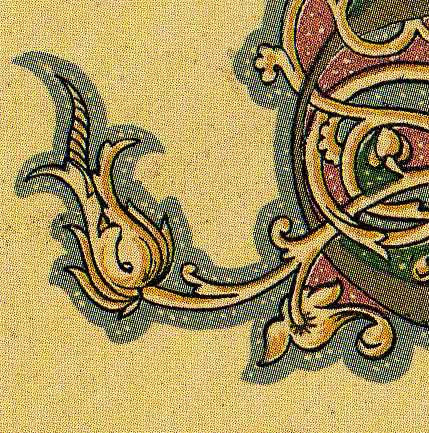
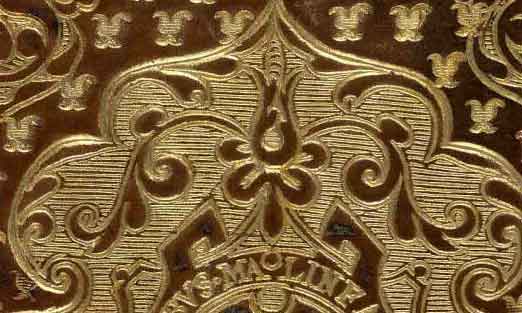
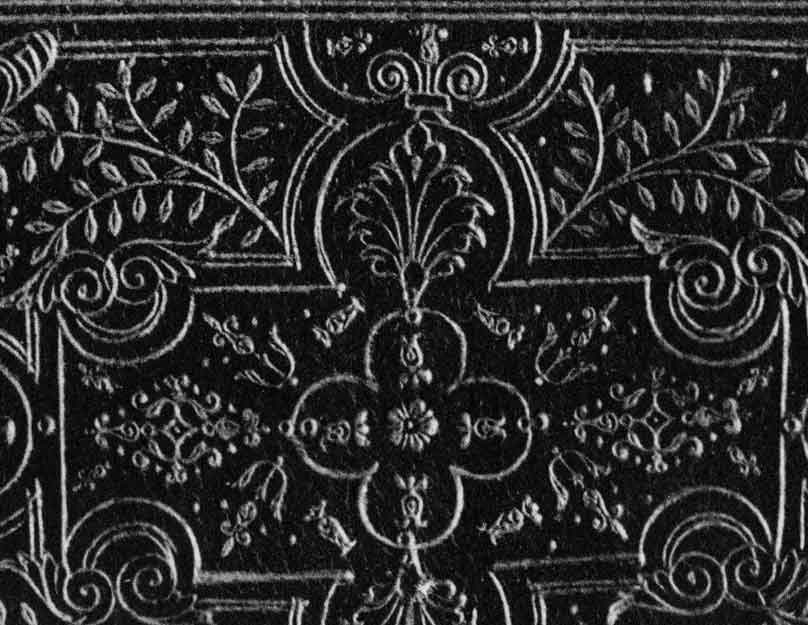
| I want to return now to the tools found on the 1752 Semaine Saint binding at the top of the page. I have carefully scanned the flueron that is found in the center of the spine compartments (catalogued provisionally as pd-52) at the same time selecting one where we can also see clearly the imprints catalogued previously as pd-51a and pd-51b. |
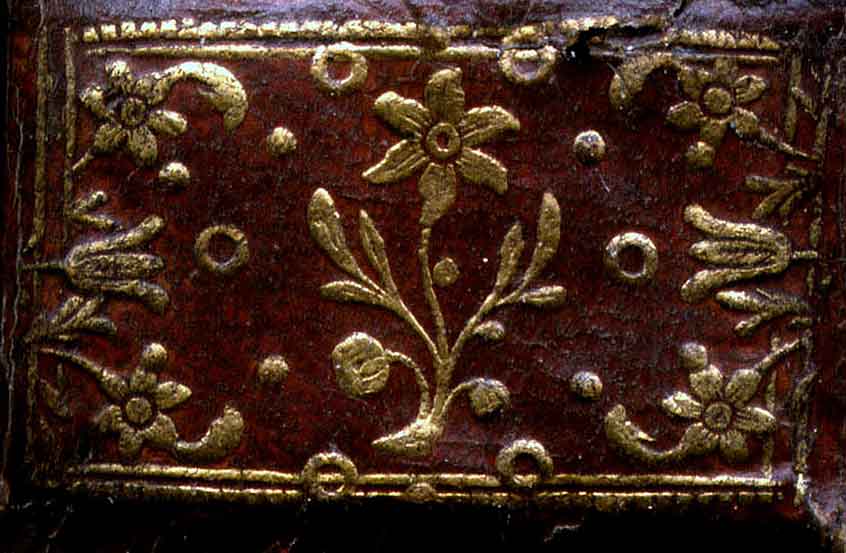
| One of my favorite Dubuisson bindings in Edward Rahir's 1910 catalogue is item #232. In the diagram below I show it along with our 1752 binding at the same scale, and we can see that the imprint pd-52 is found on both of these bindings. It is interesting to note that Rahir describes this item in 1910 as being published without a date but gives a c.1760 estimate noting that the binding should be the work of either Dubuisson or Douceur. However this same item is found in the 1930 Rahir catalogue (item #139) where it is described as c.1750 and noting that the manuscript contained is the text of a Ballet enacted in the winter of 47-48 at Versailles, and that this copy may be the one that was presented to Madame Pompadour, directrice of the theater. Thus bringing this binding much closer to having been bound in the late 40's or early 50's (below I have reproduced a scanned copy of both of these item descriptions). On the next page we are going to discover something amazing! |

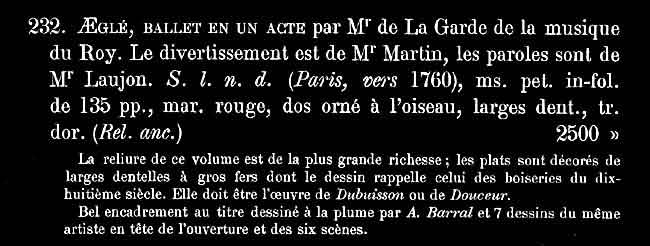

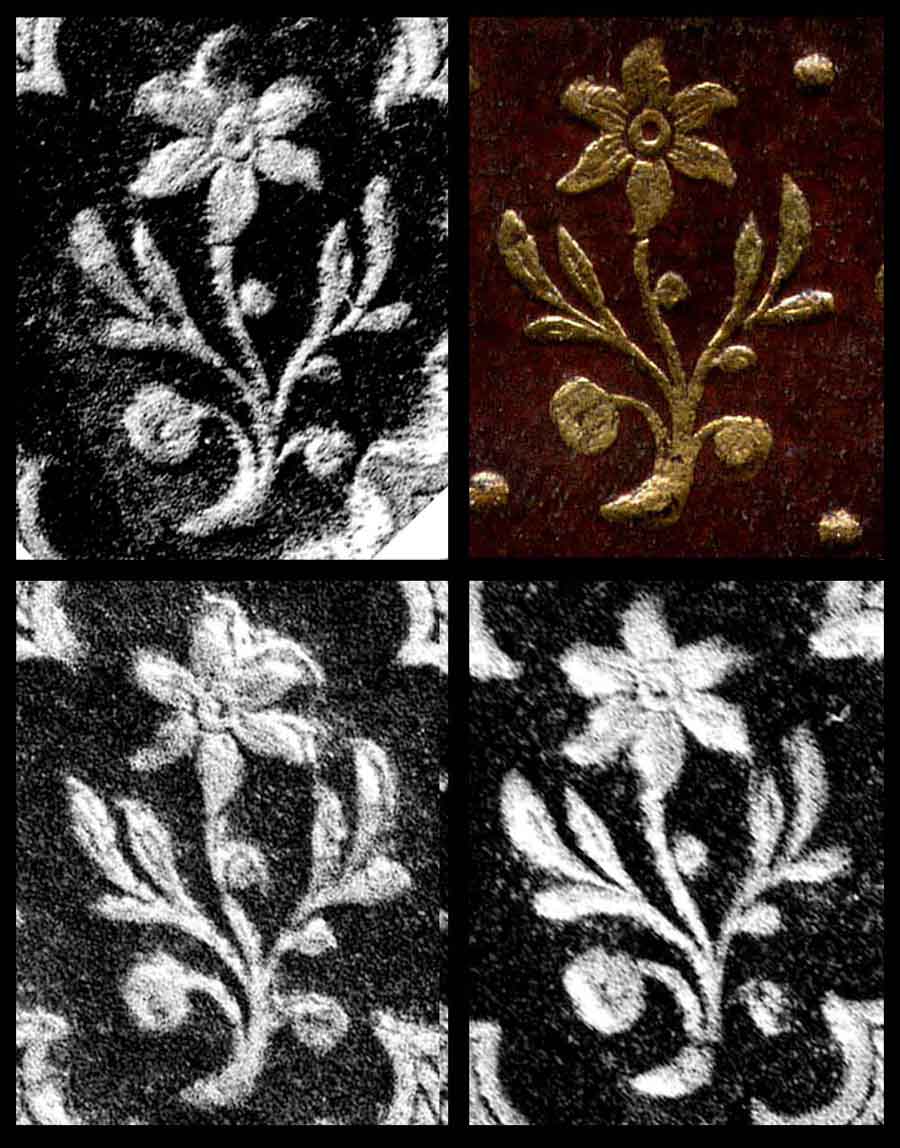
|
click on this link to go to the next page: Pierre-Paul Dubuisson - 1752
Decorative Tools - page 2
click on this link to return to: The Dubuisson Links page |
| information about the author | visit cyclopaedia.org |